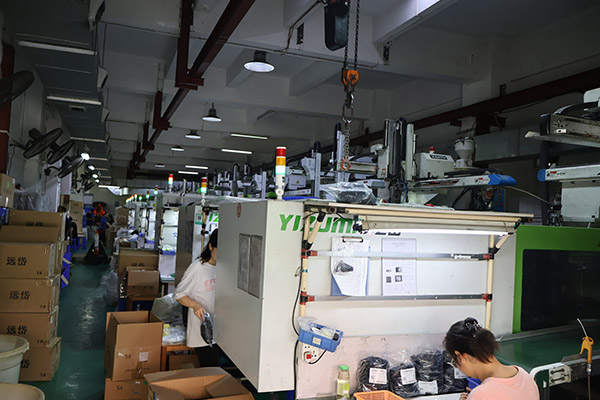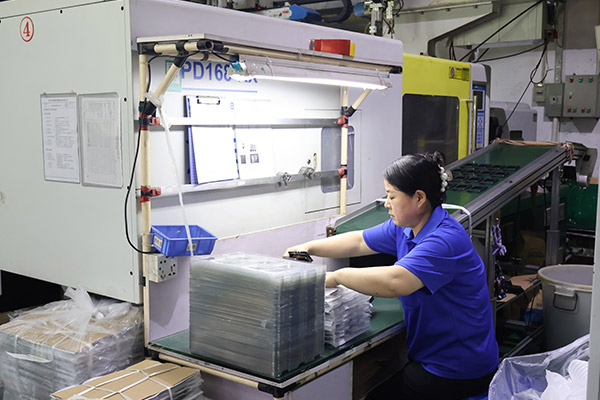
In-depth analysis of injection mold pricing: cost composition and optimization strategy
In the mass production of plastic products, injection molding technology stands out for its efficiency and consistency. However, for manufacturers, the cost of injection molds is a key factor that cannot be ignored. This article will delve into the components of injection mold costs and provide practical cost optimization strategies to help you effectively control costs while ensuring product quality.
Cost composition of injection mold

The cost of injection molds is affected by many factors, mainly including the following aspects:
Labor cost: Mold design, processing, assembly and testing require a lot of manual input, especially the production of complex molds.
Material costs: The choice of die steel, aluminum and other raw materials directly affects the cost. High-grade steel, although the cost is higher, can significantly improve the durability of the mold.
Overhead: includes the operating costs of the mold manufacturer, such as rent, equipment depreciation, software subscriptions, insurance, etc.
Profit margin: Mold manufacturers usually add a certain percentage of profit on the basis of cost, and the profit margin of domestic and foreign mold factories is generally between 15-25%.
Special processing: such as CNC machining, EDM, surface treatment, etc., these additional processing steps will significantly increase the cost of the mold.
Transportation and handling: Especially the transportation costs of large molds, the impact on the final cost cannot be ignored.
Other factors: including design complexity, part size, tolerance requirements, simulation needs, expedited delivery times, etc., will have an impact on mold costs.
Typical cost range for injection moulds
The price of injection moulds can vary widely, with small simple moulds likely to cost between $1,000 and $5,000, while large complex moulds can cost more than $80,000. Multi-cavity molds typically cost more than $25,000 to $150,000. These cost estimates provide a rough reference range, but actual costs can be affected by a variety of factors described above.
Strategies to reduce injection mold costs
In order to effectively control the cost of injection molds, the following are some practical strategies:
Optimize part design: By simplifying part geometry and reducing unnecessary complex features, mold manufacturing costs can be significantly reduced.
Combine parts: Combine multiple parts into one, reducing the number of molds, thereby saving costs.
Use standard components: Choose standard mold components and materials to avoid expensive custom designs.
Adjusting surface finish: The appropriate relaxation of surface finish and tolerance requirements can reduce costs without compromising the performance of the final product.

Prototype validation: Before investing in expensive production tooling, use a lower-cost prototype tooling for design validation.
Automated design: The use of standardized mold design platform, simplify the design and processing process, reduce the overall cost.
Consider overseas sourcing: While overseas mold manufacturers may offer lower costs, the potential impact of lead time and engineering support needs to be weighed.
Leverage supplier relationships: Establish long-term relationships with mold suppliers to get cost optimization advice and better prices.
Through the above strategy, you can effectively control the cost while ensuring the quality of the injection mold. If you are ready to start designing injection molded parts, it is recommended to work with an experienced engineering team for professional guidance and support. At Pinbo, we have many years of experience in the design and manufacture of injection molds and are able to provide you with professional advice and high-quality mold solutions.
Recommended
- -Precision mold development process and production technology requirements and precautions
2024-11-16 - -Technical characteristics of two-color mold
2024-11-16 - -Optimizing Plastic Mold Development with Strategic Material Selection
2024-11-05 - -Plastic box mold: a tool to improve packaging efficiency
2024-10-26 - -The essence of the injection molding process: the fusion of precision and efficiency
2024-10-26 - -Quality management in plastic mold manufacturing
2024-10-26 - -The fine process of mold manufacturing from design to completion
2024-10-26 - -Refined: the essence of plastic mold design
2024-10-26 - -In-depth analysis of injection mold pricing: cost composition and optimization strategy
2024-10-26 - -What is the best practice for sourcing injection moulded parts from China
2024-10-26

